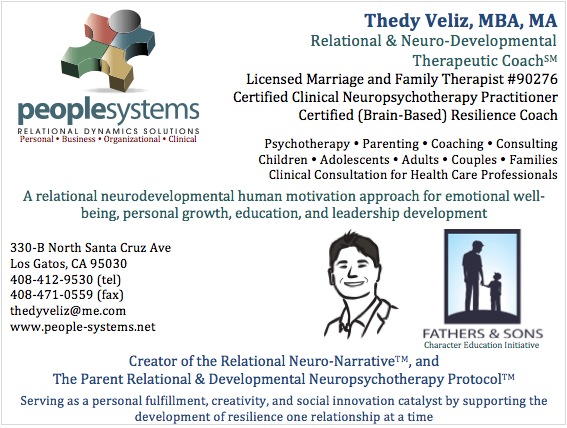About The Parent Relational & Developmental Neuropsychotherapy Protocol™
The Parent Relational & Developmental Neuropsychotherapy Protocol (The Protocol) blends neuropsychotherapy concepts (Grawe, 2007; Rossouw, 2014) with the latest research and clinical findings from attachment theory (Bowlby, 1969; Bowlby, 1973; Bowlby, 1980; Bowlby, 1988; Ainsworth et al., 1978); interpersonal neurobiology (Siegel, 2012); affective and developmental neuroscience (Tronick, 2007; Porges, 2011); behavioral epigenetics (Baylin, 2013; Cozolino, 2014; Meaney, 2010); complex and developmental trauma (Ogden et al., 2006; Levine, 2010; Ogden & Fisher, 2015; van der Kolk, 2015); affect regulation theory (Schore, 2012); and human motivation (e.g., self-determination theory: Deci & Ryan, 2008; Ryan & Deci, 2000) with leadership development and neuroscience (Waldman, Balthazard, & Peterson, 2011), emotional intelligence (Goleman, 1995), dyadic developmental psychotherapy (Hughes, 2006; Hughes, 2009; Hughes, 2011; Hughes & Baylin, 2012; Baylin & Hughes, 2016), and object relations therapy (Axelman & Shapiro, 2012, Quatman, 2015; Greenberg & Mitchell, 1983; Winnicott, 1960; Winnicott, 1965; Winnicott, 1971, Winnicott, 1986) while applying such concepts to parent therapy. Parent therapy (Jacobs & Wachs, 2002; Wachs & Jacobs, 2006) is a therapeutic modality used to work with parents instead of directly working with children, teenagers, and even young adults that might be struggling with being successfully independent from their parents.
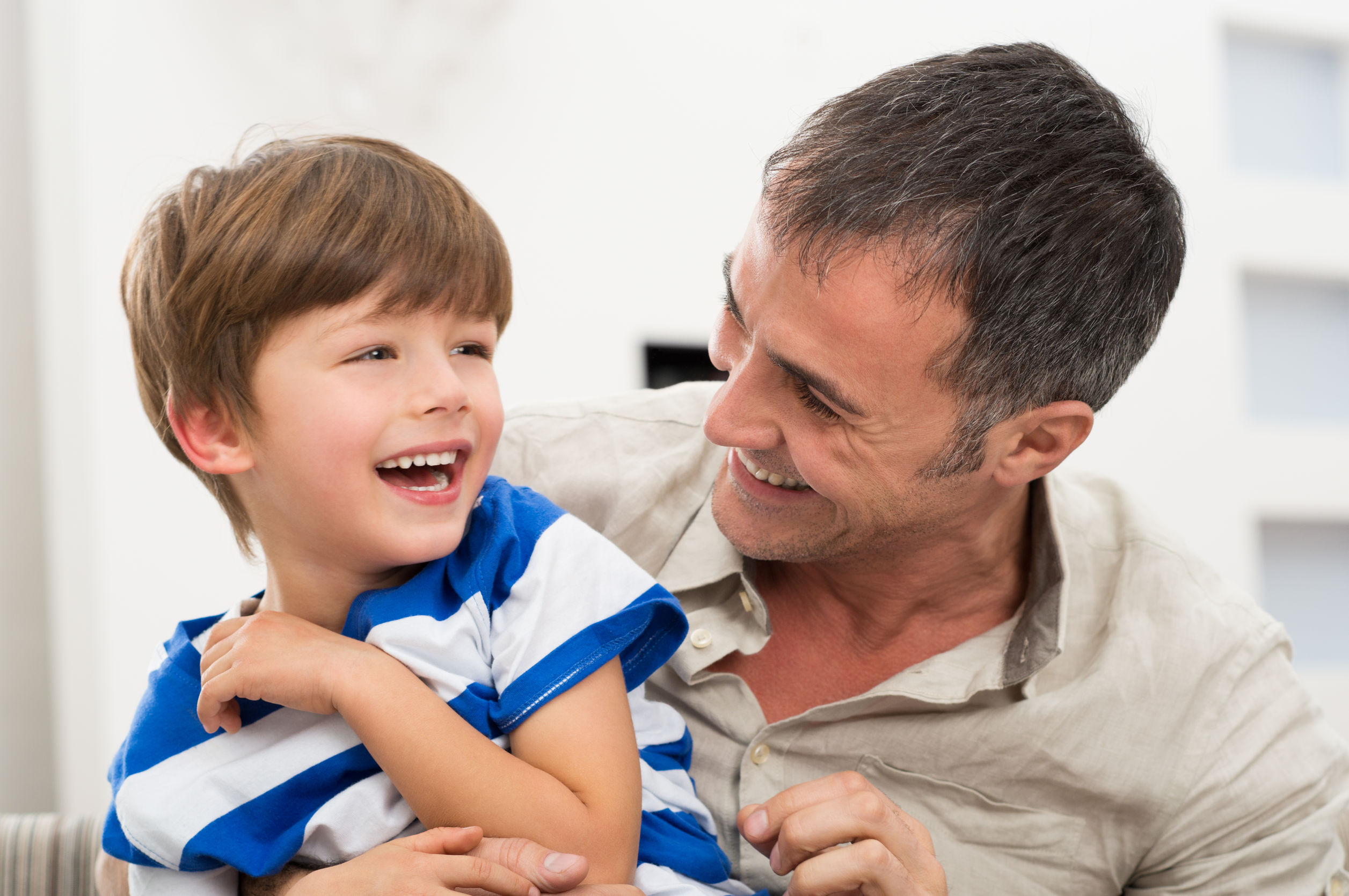
The Protocol encourages parents to focus on the emotional internal dynamics that the child continues to communicate through the challenges, symptoms and behaviors that are causing relational disruptions in the home rather than focusing on the ‘negative behavior’ by trying to directly extinguish, control, punish, or eliminate it.
Regardless of the source and the type of symptoms, The Protocol conceptualizes the challenges and behaviors as a disregulation of child’s stress response system which is best soothed by focusing on helping the child feel safe through a loving and trusting relationship between the parent and child.
The Protocol uses Relational Neuro-Narratives™ as the curative active ingredient to assist the child in learning how to integrate all aspects of his life (e.g., good and bad; past, present and future; anger, happiness and sadness; self and other; love and hate). Relational Neuro-Narratives™ attempt to equip the child with a cohesive narrative of their life story which is the most consistent predictor of adult attachment security (Siegel, 2012).

Focus on the emotional and relational meaning underneath the child’s symptom
The Protocol sees the ‘negative behavior’ as the child’s way of communicating that something is not right and requires attention from the caregiver, as the child is unable to express his discomfort through language. Thus, the child’s tantrum is not something to be extinguished or to be treated with a time-out, but rather something to be understood and ‘joined with’ by providing attention and ‘time-in’ (Hughes, 2014). Unlike the traditional medical model that drives modern psychiatry and psychotherapy treatment approaches, The Protocol does not attempt to treat what the child has (e.g., the symptom), but rather what the child might not have (e.g., security, an accurate and cohesive narrative of his life, the ability to self-regulate). Therefore, whether the child is engaging in self-harm behaviors, having suicidal thoughts, using substances, or exhibiting anger, fear, compulsiveness, hyperactivity, or sadness; the message from the child is the same: There is something wrong (with me) and I don’t know how to fix it. I need help! Can you help me? Do you believe in me? Will you continue to love me even though I might feel unlovable right now? Can you please tell me that I am not ‘bad’ even though I feel ‘bad’? Because if you don’t believe in me, I don't think I can believe in myself!
Treatment Objective
The objective of The Protocol is to support the development of therapeutic parenting relationships which can be used with all children in the household by providing coaching techniques in a short period of time while parents examine how their personal history might be affecting their interactions and overall relationship with the child, significant other, other family members, friends, colleagues and their extended community.
Healing Ingredient
The overarching healing ingredient of The Protocol is an intervention which I call Relational Neuro-Narratives™ through which the parent facilitates the soothing of the child's limbic system (Baylin & Hughes, 2016), provides interventions to contribute to memory reconsolidation (Ecker et al., 2013), and delivers an overall improvement of the parent-child relationship as a way to move the child from avoidance to approach patterns of behavior to improve wellness and resilience (Rossouw, 2015). In essence, Relational Neuro-Narratives™ operationalize the neuropsychotherapeutic ingredients which allow the parent to assist the child to shift from ‘bottoms-up’ survival mental loops to a ‘top-down’ approach to self-regulation (Rossouw, 2014) with the parent as the facilitator and co-regulator of this shift.
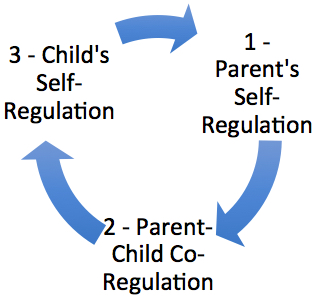
Stages of Treatment
The Protocol consists of three stages starting with the self-regulation of the parent which is critical for the parent to be a healing instrument for the child; followed by parent-child co-regulation strategies; which in turn sets up the child to be able to self-regulate his own emotions through a process of integration. The Protocol is designed to be experiential and for there to be an ongoing feedback loop between the therapist, the parent and the child. In essence, the therapist provides therapeutic interventions to the child through the parent, and in the process healing takes place in both the parent and the child. During the initial stage, the therapist uses neuropsychotherapy principles to assist the parent to self-regulate. The therapist then encourages the parent to use the same principles to support the child’s self-regulation process. Each stage of the treatment informs the other in an ongoing cycle that continues providing feedback among the therapist, parent and child.
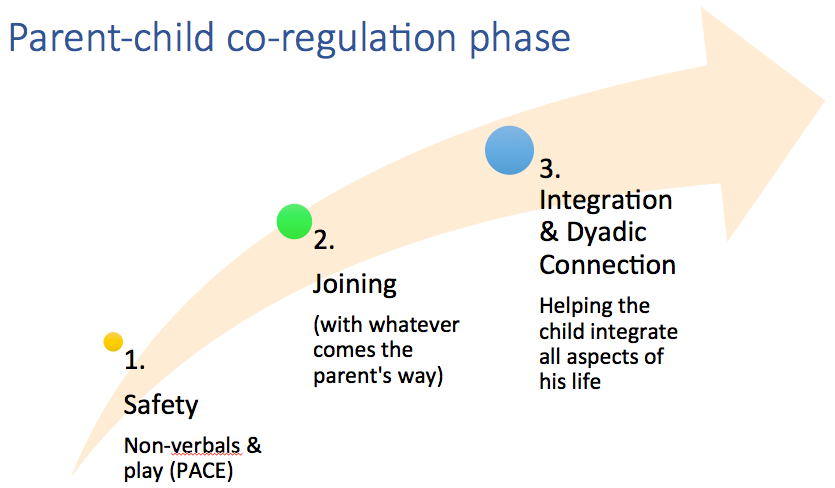
The interventions which the parent provides the child include three components: The development of a safe environment through the use of soothing non-verbal communications driven by Daniel Hughes’ concept of PACE (playfulness, acceptance, curiosity, and empathy) (Hughes, 2009); joining with where the child is (and anything that the child throws the parent’s way) by attempting to determine what the behavior might be communicating about the child’s emotional internal word instead of focusing on the behavior itself; and helping the child integrate all aspects of his life (e.g., past and future; good and bad; happiness and sadness) while helping the child make connections between his thoughts, feelings and behaviors through the use of Relational Neuro-Narratives™ which are powered by memory reconsolidation processes (Ecker et al., 2013).
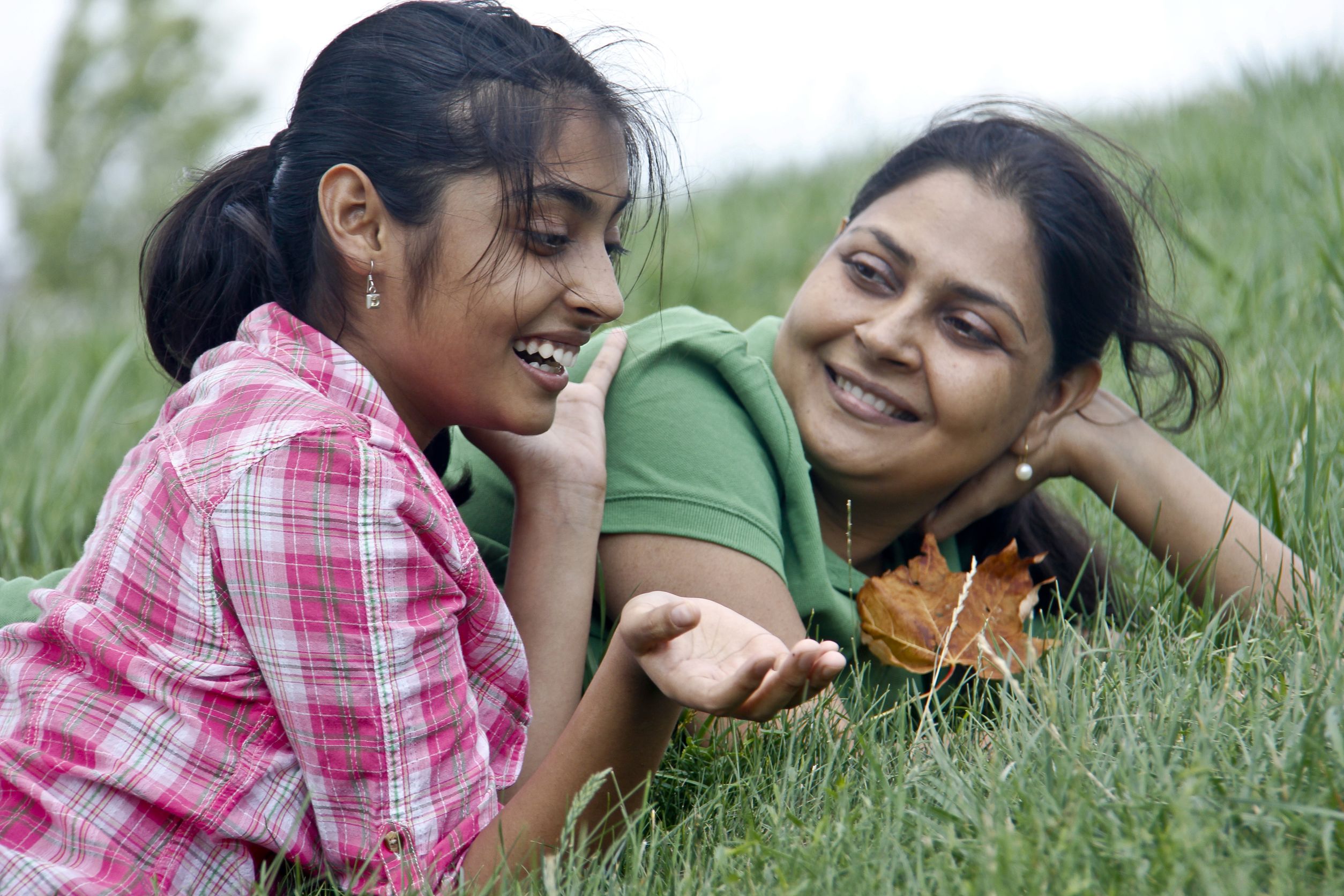
The Parent Relational & Developmental Neuropsychotherapy Approach™ was submitted to fulfill the requirements to become a Certified Clinical Neuropsychotherapy Practitioner by the International Association of Clinical Neuropsychotherapy, and was presented at the International Conference of Neuropsychotherapy in Brisbane, Australia in May 2017.
I have been invited to present an expanded version of The Protocol at the 2nd International Conference of Neuropsychotherapy at the Melbourne Brain Centre and Royal Melbourne Hospital in Melbourne, Australia in May 2018.
References
- Ainsworth, M. S., Blehar, M. C., Waters, E., & Wall, S. (1978). Patterns of attachment: A psychological study of the strange situation. Oxford, England: Lawrence Erlbaum.
- Axelman, M. J., & Shapiro, J. L. (2012). An introduction to child counseling and psychotherapy: A relational developmental approach. Unpublished Manuscript.
- Baylin, J. (2013). Behavioral Epigenetics & Attachment. The Neuropsychotherapist, 3, 68-79.
- Baylin, J. & Hughes, D. A. (2016). The neurobiology of attachment focused therapy: Enhancing connection and trust in the treatment of children and adolescents (Norton Series on Interpersonal Neurobiology). WW Norton & Company.
- Bowlby, J. (1969). Attachment and loss. Vol. 1: Attachment. New York: Basic Books.
- Bowlby, J. (1973). Attachment and loss. Vol. 2: Separation. New York: Basic Books.
- Bowlby, J. (1980). Attachment and loss. Vol. 3: Loss, sadness, and depression. New York, NY, US: Basic Books.
- Bowlby, J. (1988). A secure base: Parent-child attachment and healthy human development. New York, NY, US: Basic Books.
- Cozolino, L. (2014). The Neuroscience of Human Relationships: Attachment and the Developing Social Brain (Norton Series on Interpersonal Neurobiology). WW Norton & Company.
- Deci, E. L., & Ryan, R. M. (2008). Self-determination theory: A macrotheory of human motivation, development, and health. Canadian psychology/Psychologie canadienne, 49(3), 182.
- Ecker, B., Ticic, R., Hulley, L. (2013). A primer of memory reconciliation and its psychotherapeutic use as a core process of profound change. The Neuropsychotherapist, 1: 82-99.
- Goleman, D. P. (1995). Emotional intelligence: Why it can matter more than IQ for character, health and lifelong achievement. Bantam Books.
- Greenberg, A., & Mitchell, S. (1983). Object relations in psychoanalytic theory. Harvard University Press.
- Hughes, D. A. (2009). Attachment-focused parenting: Effective strategies to care for children. WW Norton & Company.
- Hughes, D. A. (2006). Building the bonds of attachment: Awakening love in deeply troubled children. Jason Aronson.
- Hughes, D. A. (2011). Attachment-focused family therapy workbook. WW Norton & Company.
- Hughes, D. A. (2014, August 4). Dyadic Developmental Psychotherapy: A relationship based intervention for traumatized children and their families. Masterclass presented by Kim Golding and Daniel Hughes at the Child Trauma Conference, Australian Childhood Foundation, Melbourne, Australia.
- Hughes, D. A., & Baylin, J. (2012). Brain-Based Parenting: The Neuroscience of Caregiving for Healthy Attachment (Norton Series on Interpersonal Neurobiology). WW Norton & Company.
- Jacobs, L., & Wachs, C. (2002). Parent therapy: A relational alternative to working with children. C. Wachs (Ed.). Jason Aronson Incorporated.
- Levine, P. A. (2010). In an unspoken voice: How the body releases trauma and restores goodness. North Atlantic Books.
- Meaney, M. J. (2010). Epigenetics and the biological definition of gene× environment interactions. Child development, 81(1), 41-79.
- Ogden, P., Minton, K., & Pain, C. (2006). Trauma and the body: A sensorimotor approach to psychotherapy (norton series on interpersonal neurobiology). WW Norton & Company.
- Ogden, P., & Fisher, J. (2015). Sensorimotor Psychotherapy: Interventions for Trauma and Attachment (Norton Series on Interpersonal Neurobiology). WW Norton & Company.
- Porges, S. W. (2011). The Polyvagal Theory: Neurophysiological Foundations of Emotions, Attachment, Communication, and Self-regulation (Norton Series on Interpersonal Neurobiology). WW Norton & Company.
- Quatman, T. (2015). Essential psychodynamic psychotherapy: an acquired art. Routledge.
- Rossouw, P. J. (2014). Neuropsychotherapy: Theoretical underpinnings and clinical applications. Brisbane, AUS: Mediros Pty Ltd.
- Rossouw, P. J. (2015). Resilience: A neurobiological perspective. Neuropsychotherapy in Australia, 31: 3-8.
- Ryan, R. M., & Deci, E. L. (2000). Self-determination theory and the facilitation of intrinsic motivation, social development, and well-being. American psychologist, 55(1), 68.
- Schore, A. N. (2012). The Science of the Art of Psychotherapy (Norton Series on Interpersonal Neurobiology). WW Norton & Company.
- Siegel, D. J. (2012). The developing mind, second edition: How relationships and the brain interact to shape who we are. Guilford Publications.
- Tronick, E. (2007). The neurobehavioral and social-emotional development of infants and children. WW Norton & Company.
- van Der Kolk, B. (2015). The body keeps the score: Brain, mind, and body in the healing of trauma. Penguin Books.
- Wachs, C., & Jacobs, L. (Eds.). (2006). Parent-focused child therapy: attachment, identification, and reflective functions. Jason Aronson.
- Waldman, D. A., Balthazard, P. A., & Peterson, S. J. (2011). Leadership and neuroscience: Can we revolutionize the way that inspirational leaders are identified and developed?. The Academy of Management Perspectives, 25(1), 60-74.
- Winnicott, D. W. (1960). The theory of the parent-infant relationship. The International journal of psycho-analysis, 41, 585.
- Winnicott, D. W. (1965). The maturational process and the facilitating environment. International University Press.
- Winnicott, D. W. (1971). Playing and reality. Psychology Press.
- Winnicott, D. W. (1986). Home is where we start from: essays by a psychoanalyst, DW Winnicott. Penguin Books.
